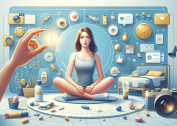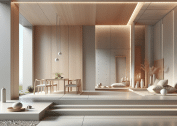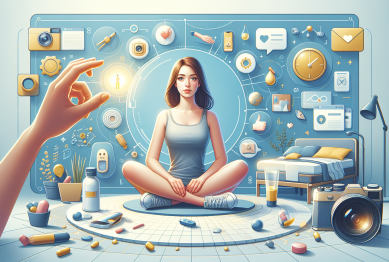The phrase work smarter not harder has never been more timely. As burnout spikes and wellness becomes integral to productivity culture, emerging tools and techniques are shifting the balance. In 2025, working smarter means integrating AI and well-being practices to streamline tasks, support mental health, and sustain high performance.

Why “Work Smarter Not Harder” Matters More Than Ever
A recent report highlights a troubling trend: after-hours work has surged—16% more meetings occur after 8 p.m.—as staff juggle heavier workloads and digital overload, averaging 117 emails and 153 chats daily. Burnout mentions have spiked by 32% year-over-year. It’s a clear sign: working longer doesn’t mean working better.
That’s where work smarter not harder comes in. Rather than toiling endlessly, it’s about using tools, routines, and wellness mindsets to optimize time, energy, and creativity. The goal? Produce more—without sacrificing well-being.
1. AI as Your Wellness Productivity Partner
AI Tools Doing Heavy Lifting
Many professionals are turning to AI assistants to lighten repetitive burdens. One design firm, for example, uses ChatGPT, Otter.ai, and Notion to maintain creativity and speed within a 4-day workweek. A Microsoft–LinkedIn study found that 75% of knowledge workers use AI tools, with 90% citing time savings and 85% noting they can focus on higher-value tasks.
These examples highlight a shift from laborious output to strategic, creative work—the essence of working smarter.
Smart Routine Optimization
AI-driven platforms can now monitor our habits, stress, and workload. Tools analyze physiological cues and stress signals to prompt breaks or adjust workflows. These solutions help you work smarter not harder, reducing fatigue and improving focus.
2. Intentional Workflows: Less Hustle, More Focus
From Hustle Culture to Intentional Flow
The grind culture of doing more for longer is being replaced by intentional work practices. A 2025 trend emphasizes that success is measured not by quantity of output, but by the effectiveness of how you work.
This intentional approach centers on:
-
Time-blocking with clear goals.
-
Allocating focused work windows without distractions.
-
Integrating wellness breaks—stretching, breathing, or stepping outside.
Refreshing Work Rhythms
Blended routines—based on the Pomodoro method, mindful micro-breaks, or even midday walks—keep energy fresh. Smart AI scheduling ensures these breaks land at optimal moments, preventing fatigue and decision paralysis.
3. AI + Wellness = Sustainable Productivity
Preventative Wellness and Bio-Optimizing Breaks
The wellness industry is embracing smart rest. High-tech wellness solutions—ranging from biofeedback to AI-curated relaxation—are becoming workplace staples.
Some companies now offer:
-
Digital detox zones with no-screen policies.
-
Personalized wellness apps that sync with wearables to nudge breaks or breathing exercises.
This fusion of tech and wellness boosts output: you’re more present, creative, and energized throughout your day.
Culture Shift: From Output to Well-Being
Research shows that when organizations center on wellness—through meditations, flexible breaks, and emotional support—employee engagement and retention soar. A wellness-centric culture reframes productivity from “hours logged” to impact created, making burnout an outlier.
4. Real-World Examples of Smarter Work
Here are actionable ways companies are working smarter—and supporting wellness:
4-Day Weeks Powered by AI
One creative agency maintained output while shifting to a 4-day workweek by leveraging AI for research, automation, and brainstorming. Employees reported higher creativity and fewer burnout signs thanks to structured focus time and smart tools.
SME Efficiency Gains
An Australian SME automated admin processes such as recruitment and payroll using AI. The result: faster decisions, better engagement, and more time for deep work.
These firms are redefining productivity metrics: from task checklists to quality of time spent.
5. Tips to Start Working Smarter & Prioritize Wellness
Ready to embrace smarter work? Here’s how to begin:
-
Pick one AI task – Let an assistant draft meeting notes or brainstorm ideas.
-
Set micro-break reminders – Use wearables or apps to prompt walk/stretch every 60–90 minutes.
-
Time-block your wellness – Schedule lunch walks, breathing sessions, or offline downtime.
-
Automate repetitive chores – Use apps for scheduling, follow-ups, or email workflows.
-
Create feedback loops – Reflect weekly: Which tools helped? When were you most productive?
-
Set cultural norms – If you’re a manager, role-model breaks and wellness support.
Why This Trend Is Here to Stay
Let’s recap why work smarter not harder is the lasting workplace revolution:
-
Burnout is rising – Heavier workloads and digital fatigue demand more sustainable solutions.
-
AI boosts focus – With tools handling routine work, creative energy is unleashed.
-
Wellness demands persist – Employees increasingly seek environments that support mental health.
-
Proven outcomes – Firms that blend AI, wellness, and culture report better performance and retention.
Final Thoughts
Working smarter, not harder in 2025 is no longer just a catchphrase—it’s a lifestyle powered by AI automation and intentional wellness. Structuring your day for both efficiency and mental resilience isn’t just smart—it’s sustainable. With a few strategic changes, you can optimize both your output and well-being.
References
- Microsoft Work Trend Index. (2024). AI at Work Is Here. Now Comes the Hard Part. Retrieved from: https://www.microsoft.com/en-us/worklab/work-trend-index
- Harvard Business Review. (2023). How Companies Can Profit from a Growth Mindset. Retrieved from: https://hbr.org/2014/11/how-companies-can-profit-from-a-growth-mindset
- Wall Street Journal. (June 17, 2025). More of Us Are Putting in Extra Hours After the Workday. Retrieved from https://www.wsj.com/lifestyle/workplace/more-workers-are-putting-in-extra-hours-after-the-workday-fb6b57aa









